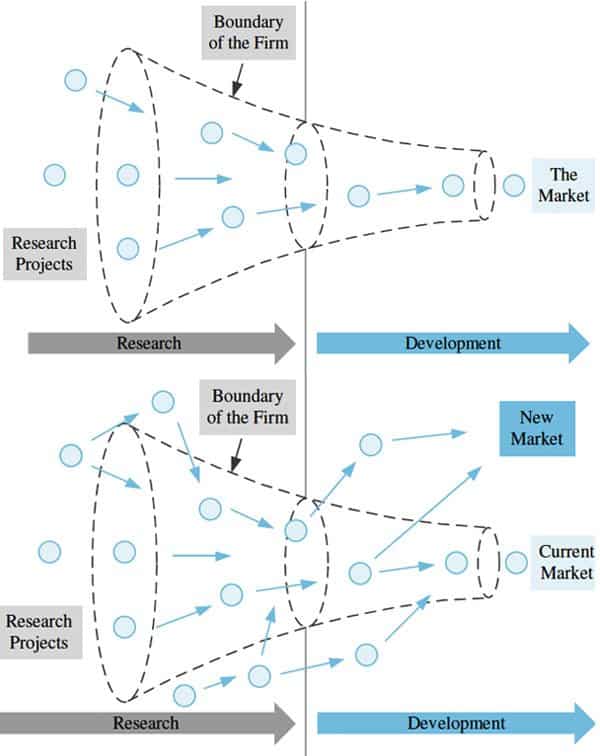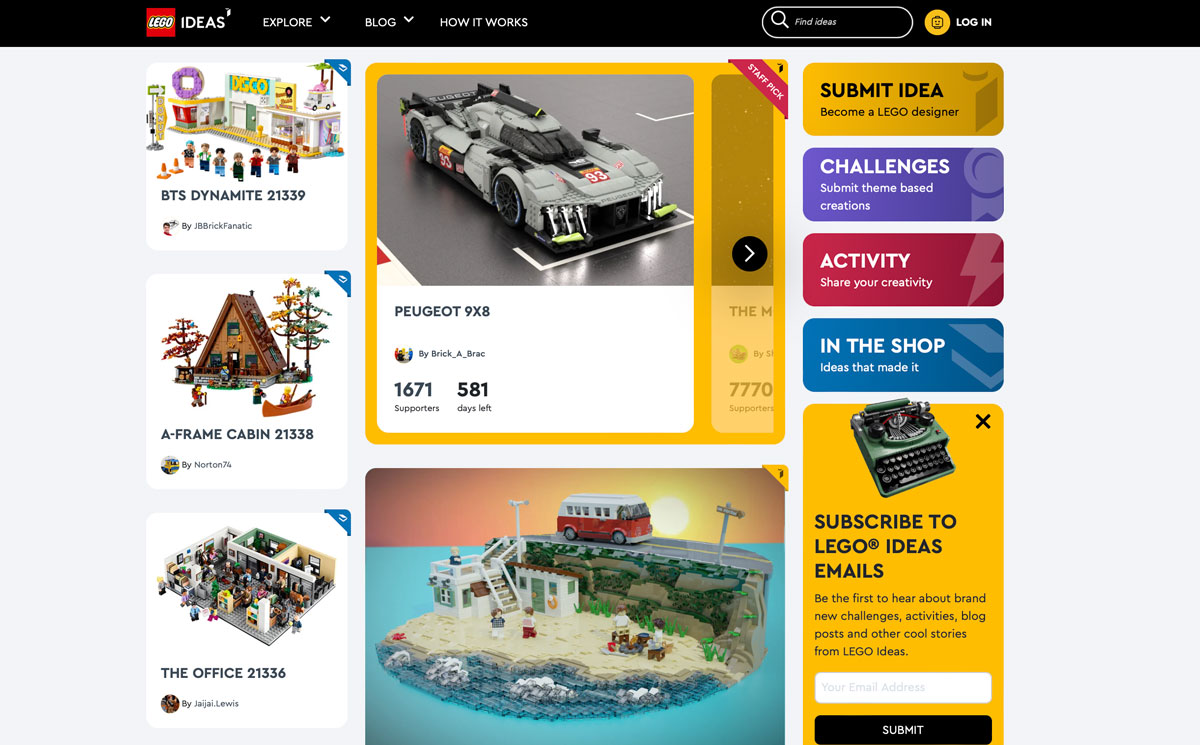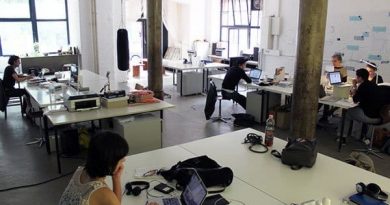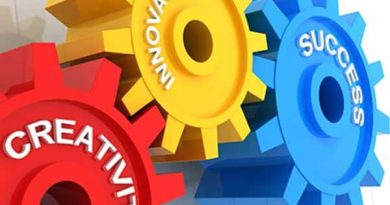What is Open Innovation? And How it Fuels Creativity
Scholars, practitioners and business leaders have agreed that innovation and creativity are essential to sustain success and achieve competitive advantage in the present market. While our main focus here is on the creative industries, top companies in different niches have understood that they should “innovate or die.” Many strategies have been adopted to achieve innovation inside the company with a holistic approach that applies not only to production and/or services but also to business model innovation, process innovation, and technological innovation, paving the way to a new concept of open innovation.
The core of the internal innovation process is to feed the R&D department with creative ideas that can achieve success in the research stage and move to the production lines. The traditional understanding of the innovation process has been limited inside the boundaries of the company. Firms have been applying the innovation process internally using ideas from company employees dependent on the company’s own resources and assets. This type of innovation is known as a closed innovation model. No external assets are used in the R&D process. However, this traditional form of innovation faces barriers that not only cause the failure to process creative ideas but also consider the innovation process a resource-consuming stage and develop new business models. Obstacles of innovation include but are not limited to high innovation costs, increasing product complexity and a short product lifecycle.
Related posts:
How to Identify Talented Innovation Leaders?
Turning strategic innovation Into Profit: Tips and Practices
What is Open Innovation?
In order to overcome the above obstacles, Dr Henry Chesbrough, Executive Director, Center for Open Innovation, Haas School of Business, has introduced the open innovation modelin his book Open Innovation: The New Imperative for Creating and Profiting from Technology as a transformation paradigm that companies should use external ideas as well as internal and external paths to develop new products. Both external and internal ideas flow to and within the company during the research stage to drive the innovation ecosystems inside the organisation. These ideas flow to the research-development tube to refine, modify and convert to a winning product. Companies can use the ideas inside their environment or push them outside based on the creativity level applied in the open innovation model. This will be discussed later.
“Open innovation is a paradigm that assumes that firms can and should use external ideas as well as internal ideas, and internal and external paths to market, as the firms look to advance their technology.” Dr. Henry Chesbrough
Figure 1 below shows the difference between both closed and open innovation models. The top side displays the closed innovation model. The ideas are discovered inside the company without any external interference. On the other hand, the open innovation model represented in the bottom figure implements ideas from both inside and outside the companies. These ideas are applied inside the company as a new product or shared with other companies in the market. The open innovation model aims to increase the mobility of skilled workers, expand the venture capital through investing in more innovative ideas, benefit from unused technologies and build innovative collaboration with external partners.

As the one business innovation expands the creative process outside the company’s boundaries by implementing a decentralized approach, innovation managers face challenges related to this type of strategy, such as the following:
1) Able to communicate perfectly with creative people inside and outside the company.
2) Able to drive innovation inside and outside the company
3) Accept all types of ideas and people, even outside the company.
4) Understand failure as an opportunity to learn
In this video from the World Economic Forum, Dr Henry Chesbrough, introduces open innovation as a driver of ideas.
Closed vs Open Innovation Model
In order to have a clear understanding of the open innovation model. Six characteristics have been presented by Chesbrough (2006: xxvi) as follows:
| Closed Innovation Model | Open Innovation Model |
|---|---|
| Most of the smart people in our fieldwork for us | Not all smart people work for us, so we must find and tap into the knowledge and expertise of bright individuals outside our company. |
| To profit from R&D, we must discover, develop and ship ourselves | External R&D can create significant value; internal R&D is needed to claim some portion of that value |
| If we discover it, we will get it to market first | We don’t have to originate the research to profit from it |
| If we are the 1st to commercialize, we will win | Building a better business model is better than getting to market first |
| If we create the most and the best ideas in the industry, we will win | If we make the best use of internal and external ideas, we will win |
| We should control our intellectual property (IP) so that our competitors don’t profit from our ideas | We should profit from others’ use of our IP, and we should buy others’ IP whenever it advances our own business model |
The closed and open innovation models indicate a strong correlation between research and development. Additionally, open innovation combines both short-term financial interests and long-term innovation requirements through the external use of innovation and internal resources. One of the important advantages of applying the one innovation model is to gain financial advantages through the external knowledge that can contribute and, by doing so, reduce the internal investment in innovation.
Creativity in the Open Innovation Model
In the early stage of the R&D process, researchers are faced with questions related to innovative ideas, such as “what should be innovated?” and “how should it be innovated?”. These questions result from a lack of ideas and creativity at the early stage of some projects. In order to answer such questions, the open innovation model presents three types of creativity levels: inbound creativity, outbound creativity, and coupled creativity (Liao et al., 2014).
Inbound creativity
When the creative team does know what to innovate, this tactic answers the question based on researching external resources such as customer feedback and needs to reach ideas that meet the consumer’s needs and expectations. For example, Procter & Gamble developed an innovation model based on yearly research to identify the top 10 consumer needs. The R&D department uses the results of this research to innovate new products or upgrade existing ones.
Outbound creativity
Many innovative ideas fail to succeed in an existing company’s business model. While these products are replaced with others, the failed projects are considered a budget, time and effort loss. The open innovation model suggests that projects that fail inside the company’s business model can find their way to success outside the company by marketing it with an innovative business model different from the currently implemented inside the company of origin. Exporting ideas to partners or spin-off the failed project as new technology can help the company to overcome the innovation expenses.
Coupled creativity
While inbound creativity aims to import ideas and technologies from consumers and individuals, the coupled aims to build a partnership that is used to collect information from the operating environment. This relation can be either formally or informally based. For example, General Electrics established the Ecomagination Challenge model in 2010. This model invites universities, NGOs, institutes and organizations to present ideas to create smart and efficient grid technologies. A committee evaluated ideas, and the winner received a prize, investments or a commercial relationship.
Open Innovation Examples
LEGO is one of the top leading companies in the toy-making industry. It has a significant reputation for its innovative strategies on both the production and process levels. LEGO implements its innovative vision by assessing the existing opportunities, needs, and benefits of implementing open innovation in the company. LEGO established the LEGO Ideas project to allow consumers to suggest new models. The winners receive 1% of the sales royalties. This open innovation model was a reason to release new movie products such as Big Bang Theory, Ghostbusters, and Back to the Future. LEGO’s model follows the inbound creativity level of strategy. It aims to receive ideas from consumers and individuals through the LEGO Ideas website.

Another example is the P&G company products such as Swiffer Duster, TidePods, and Olay Regenerist. P&G wanted to develop a duster to advantage of its Swiffer mop project, but the prototype was not meeting the company’s expectations. The Japanese company, UniCharm developed a creative duster but with a very limited market in Japan. P&G recognized the opportunity in UniCharm’s duster. So, they licensed an agreement to deal with UniCharm and distribute the new duster in the whole world except Japan. The result was millions of revenues for both companies.

Many examples have been provided for the implementation of the open innovation model based on different business strategies. Each of the open innovation types can be applied differently to reach a successful innovation experience.
Conclusions
Innovation plays an essential role in a company’s success and market competency. However, the traditional closed innovation model can limit creativity and thwart finding new ideas inside the company boundaries. The open innovation model expands the creative capabilities inside the organization. The model can be applied based on three creativity levels aiming to source ideas and technologies based on inbound, outbound, and coupled models. Many companies have implemented the three models to achieve innovation and market success.
References:
Simic, D. (2013) Applied Open Innovation – a Case Study Analysis based on Electric Drive Technology Projects in the Automotive Industry. Vienna: Austrian Institue of Technology
Chesbrough, H. and Vanhaverbeke, J. (2006) Open Innovation: A New Paradigm for Understanding Industrial Innovation. Open Innovation: Researching a New Paradigm, pp. 1–27.
Summary
Open innovation is a transformation paradigm where companies utilise external ideas as well as internal and external paths to develop new products.
Inbound creativity: The creative team does know what to innovate, this tactic answers the question based on researching external resources such as customer feedback and needs to reach ideas that meet the consumer’s needs and expectations.
Outbound creativity: The open innovation model suggests that projects that fail inside the company’s business model can find their way to success outside the company by marketing it with an innovative business model different from the currently implemented inside the company of origin. Exporting ideas to partners or spin-off the failed project as new technology can help the company to overcome the innovation expenses.
Coupled creativity: While inbound creativity aims to import ideas and technologies from consumers and individuals, the coupled aims to build a partnership that is used to collect information from the operating environment.






